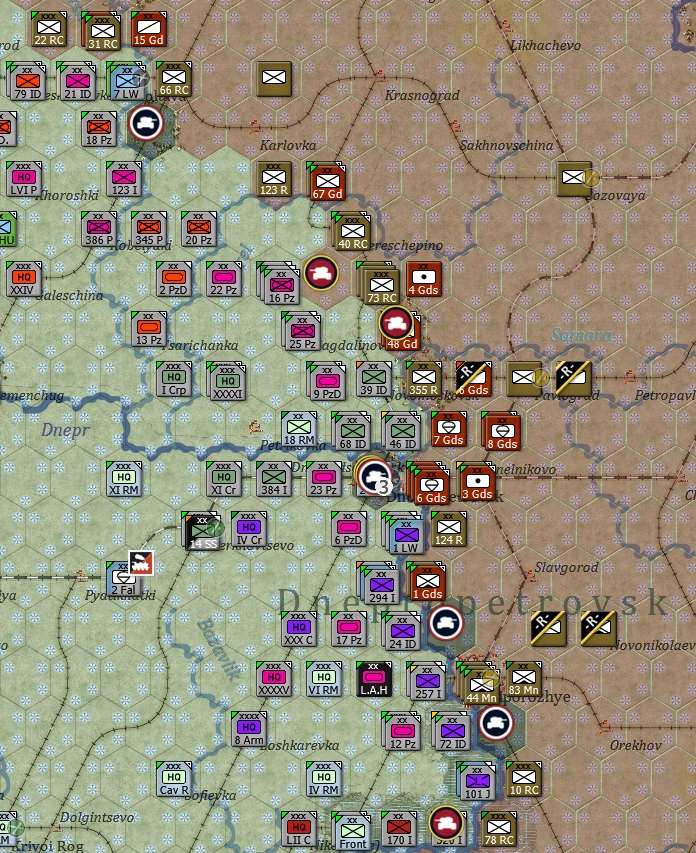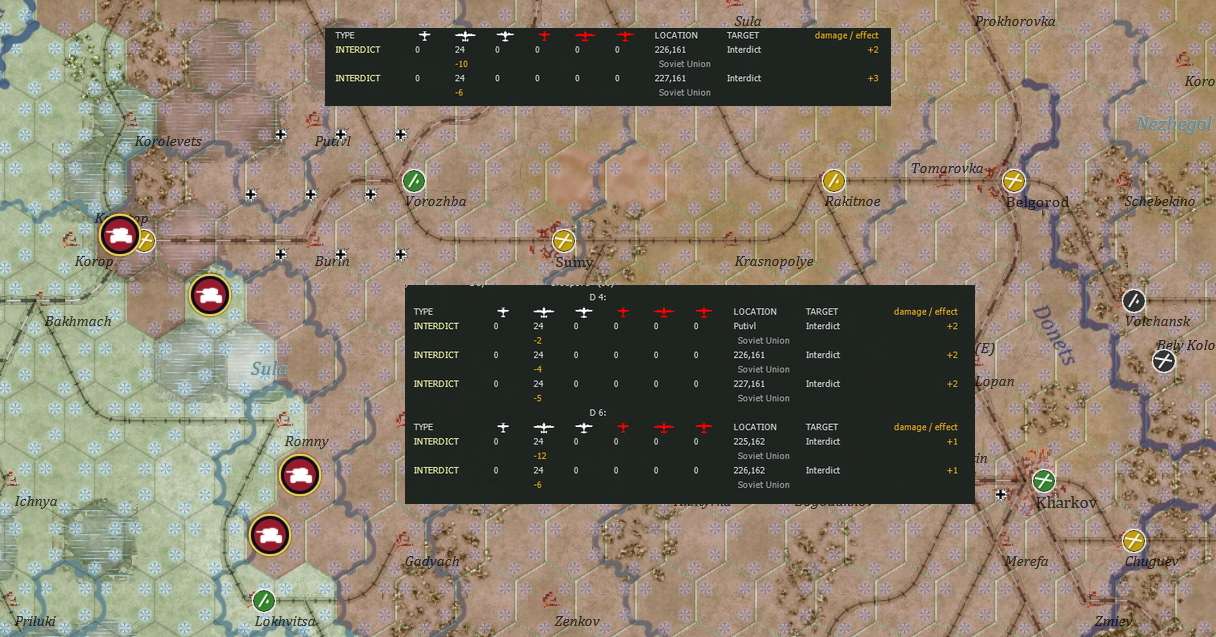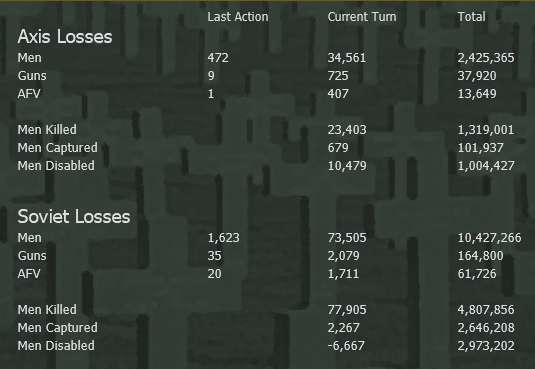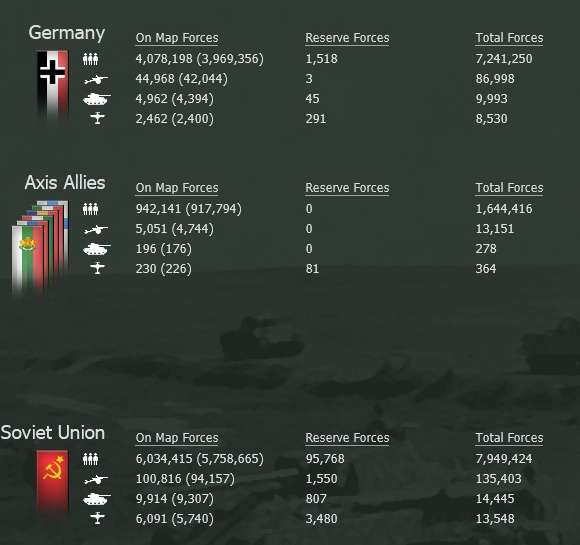The routines need to be dialed down so the defender is not being hammered down so much.
ORIGINAL: loki100
anyway, took it back - which should wreck the railyard.
Good job, counterattacks are a fine art!
Moderator: Joel Billings
ORIGINAL: loki100
anyway, took it back - which should wreck the railyard.







ORIGINAL: xhoel
ORIGINAL: Hardradi
Thats a lot of Artillery the Soviets threw at this battle. Disruption would have been pretty high.
There is a tendency to overestimate the effects of artillery in battle. Speedy can probably show us the battle details, but I doubt the answer is there. I think this has to do with the close quarter combat routines that are only triggered in Urban Combat and which leave units in unready state.
I see this in my game too. Full strength divisions going from 80% TOE to 15% ready TOE and general TOE of 50%. Too many elements are damaged and that makes the position untenable.
ORIGINAL: Hardradi
...
With that amount of 'guns', assuming they mostly commit, it will sometimes also cause significant disruption in a city battle, both for the defender and the attacker. In non-urban battles, from what I have seen, massed artillery is decisive just from the sheer number of disruptions it causes.
I well aware that infantry and HMG rule the streets. Might be better to take this back to the City thread started a while ago rather than clog up the AAR.
ORIGINAL: loki100
So clearly it can be decisive but its very variable.
Might be a product of better experience, better command chain but I don't think its commitment as such, its effectiveness when committed
ORIGINAL: loki100
ORIGINAL: Hardradi
...
With that amount of 'guns', assuming they mostly commit, it will sometimes also cause significant disruption in a city battle, both for the defender and the attacker. In non-urban battles, from what I have seen, massed artillery is decisive just from the sheer number of disruptions it causes.
I well aware that infantry and HMG rule the streets. Might be better to take this back to the City thread started a while ago rather than clog up the AAR.
In the Soviet attacks they had a lot of guns but they did next to no damage - I had about 50 elements hit from artillery and they became a mix of disrupted and damaged. In my counterattack, about half the damage inflicted on the Soviets came from my artillery.
So clearly it can be decisive but its very variable.
Might be a product of better experience, better command chain but I don't think its commitment as such, its effectiveness when committed
ORIGINAL: jubjub
...
This sounds like there was a difference in fortifications. Level 2/3 forts reduce artillery effects drastically.

















ORIGINAL: Stamb
That -10 and -12 planes losses for interdiction are huge, considering no enemy airplanes. Almost 50% in first case and 50% in a second one. Did you fly in a blizzard or what happened there?
ORIGINAL: Stamb
50% flak losses are pretty big. I assume it is flak losses as you did not fly in blizzard and there was no enemy air planes. Also I think that you was not using tactical bombers for the interdiction. So low AA was not a threat for your level bombers. That is why I think that it is huge losses. But maybe there are a lot of high altitude AA that shredded your planes in that two cases.
...
ORIGINAL: Stamb
Can Comrade Steve share his logistic report with freight received/needed when Soviets are on offensive action? Unless it is classified
ORIGINAL: loki100
I realise there is a lot of nonsense going around about Soviet logistics, well when they return to the offensive they have all the problems the axis had in 1941 and, just for the fun of it, an army of 6.5m+ compared to one of around 3.4m to supply
ORIGINAL: Beethoven1
ORIGINAL: loki100
I realise there is a lot of nonsense going around about Soviet logistics, well when they return to the offensive they have all the problems the axis had in 1941 and, just for the fun of it, an army of 6.5m+ compared to one of around 3.4m to supply
The discussion about Soviet logistics being very simple is regarding 1941 up to maybe 1943, not the later war period when Soviets are advancing into Poland and Germany.
Are you saying that you think Soviets do actually have significant logistical challenges in 1941-43 that can't be solved by simply setting supply priority 4? So far I have not really seen them in my games using the 1941 scenario and StB.
If you only mean logistical problems that come into play when Soviets advance further, that is one thing, but it is another matter to say Soviets have logistical issues when the front line is further back. I haven't seen any real evidence of that, so if you have any it would be interesting to see.
Also I am curious - what supply priorities are you using for the German troops?
